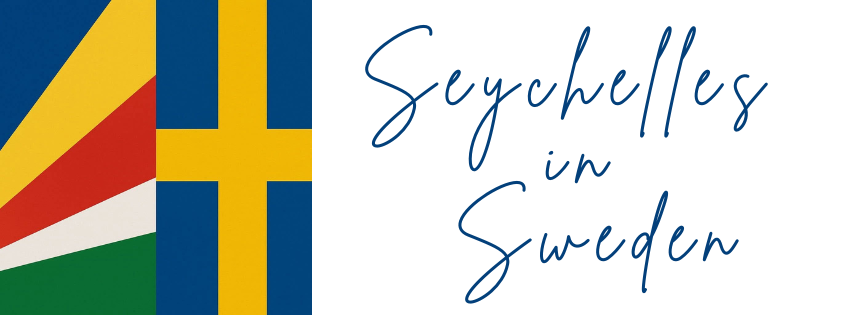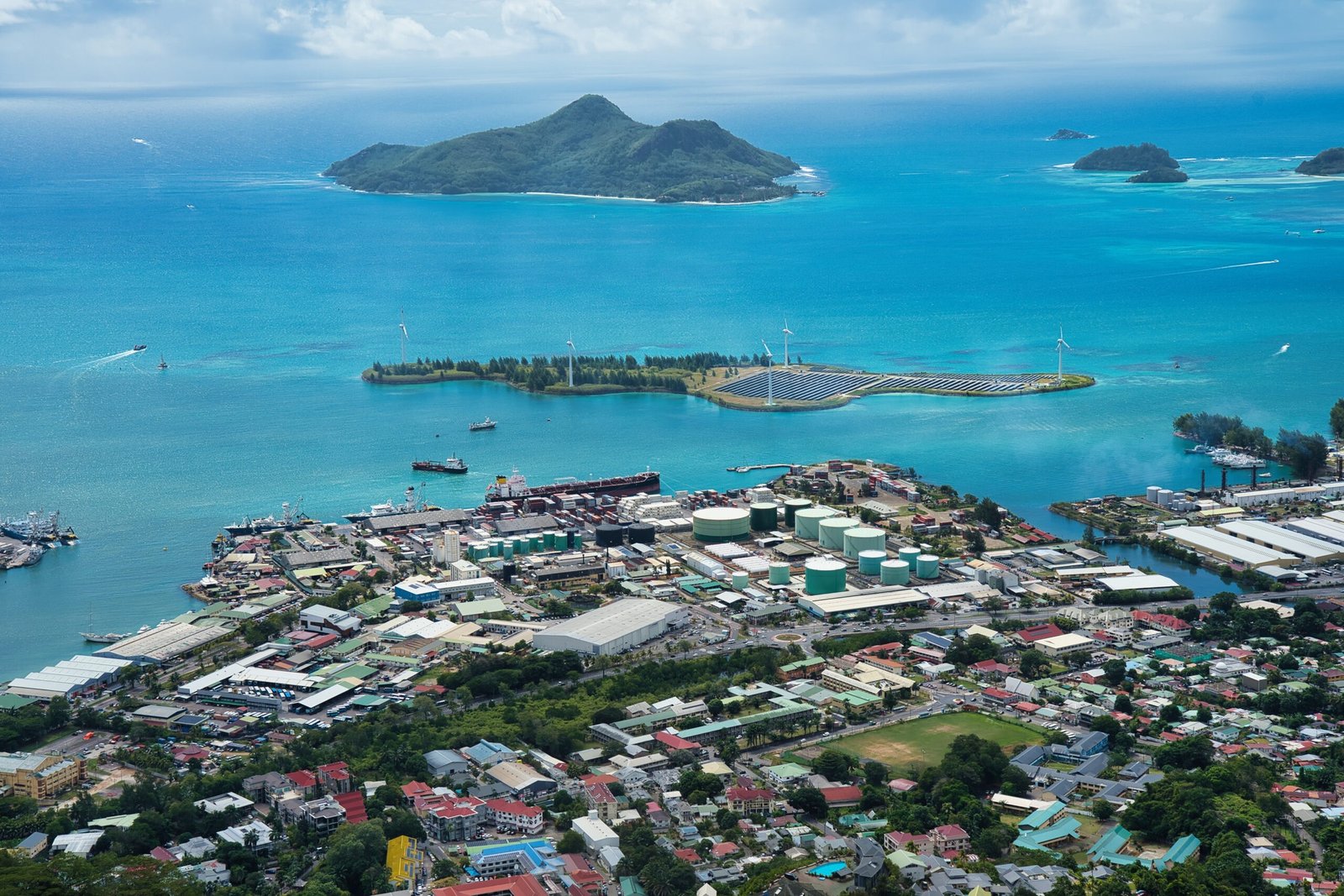A blueprint for transforming Port Victoria into a climate-smart gateway
By Mr. Salim C. Mathieu
Introduction
The bustling harbour of Victoria on the island of Mahé stands as the gateway to the Indian Ocean for the Republic of Seychelles. In an era of soaring maritime traffic and intensifying climate imperatives, the need for a next-generation “green port” has never been greater. Sweden, a global leader in sustainable maritime infrastructure and research, now offers its expertise and partnership to help transform Port Victoria into a model green port. This initiative offers a strategic convergence of vision for Seychelles and Sweden: Seychelles gains a cutting-edge port contributing to economic diversification, climate resilience, and expanded trade; Sweden reinforces its role as a partner for small island states and opens pathways for its green technology exports and research collaborations.
For Seychelles, the proposed green port initiative is far more than an infrastructure upgrade. It is a bold step towards embedding sustainability into its gateway economy, reducing greenhouse-gas emissions, optimising logistics, stimulating jobs and enabling the island nation to meet its maritime and environmental commitments. For Sweden, the collaboration underscores its global diplomacy agenda underpinned by green growth, technology transfer and inclusive partnerships. While conventional port development often prioritises scale above sustainability, this Seychelles-Sweden venture demands a paradigm shift: aligning small island economy imperatives with Swedish innovation.
In this blog we explore the framework of this partnership: the background of Port Victoria and Sweden’s sustainable port expertise; the specific collaboration avenues; the strategic benefits for both nations; and a concrete roadmap to make the vision a reality. Through this analysis, readers will gain insight into how small island states and advanced economies can co-create win-win solutions and why this partnership deserves attention on the global maritime and climate stage. By positioning Salim Mathieu as a connector, analyst and advocate for this initiative, we establish authority in the field of Seychelles-Sweden partnership discourse.
Background: Port Victoria and Seychelles’ maritime role
Port Victoria is the principal maritime gateway for the Seychelles archipelago, handling around 95 % of all imports and providing a crucial link for tourism, trade and connectivity.
The port’s modernisation programme (including quay extension and dredging) was green-lit in 2021 to increase capacity and efficiency.
These upgrades align with Seychelles’ ambition to grow its blue economy, lower logistical costs and enhance resilience given the country’s dependence on maritime links.
However, for small island developing states (SIDS) like Seychelles, maritime infrastructure growth brings unique challenges: dependence on fossil-fuel power generation, high operating costs, vulnerability to climate shocks and the need for sustainability built in from day one. The gateway port must evolve not just in scale, but in how it operates, integrates energy, logistics and environmental systems.
Sweden’s expertise and the Sustainable Port Concept
Sweden has cultivated a leadership position in sustainable port development through multi-port collaboration, research institutes and regulatory frameworks. The RISE Research Institutes of Sweden (RISE) serves as a national innovation partner coordinating Sweden’s 52 official ports in developing what is known as the “Swedish Concept for Sustainable Ports”.
This framework addresses three major nodes for ports: transport, energy and digital logistics — each intersecting across internal operations, services and external system‐integration.
The partnership announced May 6 2025 between Seychelles Ports Authority (SPA) and RISE formalises this collaboration.
The agreement, valid through December 2030, commits to strategic guidance, knowledge sharing, capacity building and pilot initiatives to position Port Victoria as a model for SIDS.
Additionally, two Swedish reference ports — Port of Helsingborg and Kvarken Ports Umeå — will serve as practical examples for Victoria’s transformation.
Key collaboration avenues
The Seychelles-Sweden partnership offers numerous concrete collaboration avenues:
Energy transition and emissions reduction – By embedding renewable energy generation, energy-efficient operations and carbon-intelligent logistics into the Port Victoria infrastructure, there is opportunity to reduce fuel imports, cut emissions and increase resilience.
Smart digital port operations – Leveraging Sweden’s experience with digital logistics and operational optimisation, Victoria’s port management can improve turnaround, tracking, predictive maintenance and stakeholder integration.
Pilot projects and capacity building – The MoU emphasises pilot initiatives (for example green quay wall structures, low-emission equipment) and personnel training (to upgrade skills among SPA staff) helping cascade the innovation beyond the port to the broader maritime sector.
Regional SIDS leadership and knowledge transfer – Through this partnership, Seychelles can emerge as a regional hub for sustainable port practice. The concept is designed to be transferable to other Indian Ocean SIDS – amplifying Sweden’s role and Seychelles’ influence.
Maritime Executive
Strategic benefits for both nations
For Seychelles:
Enhances port functionality, lowers long-term operational costs and strengthens trade logistics.
Embeds sustainability into major national infrastructure, aligning with climate and blue-economy strategies.
Elevates Seychelles’ international standing as a sustainability pioneer among SIDS.
For Sweden:
Demonstrates Swedish innovation in real-world SIDS context, enhancing exportable green port solutions.
Strengthens bilateral relations with Seychelles and the Indian Ocean region.
Reinforces Sweden’s diplomacy narrative of green growth, technology transfer and global partnership.
Implementation roadmap & recommendations
To maximise the impact of the partnership, here are recommended steps:
Diagnostic & baseline assessment (2025-26) – Evaluate current infrastructure, emissions, energy use, digital operations at Port Victoria.
Tailored roadmap development (2026-27) – Co-create a detailed plan with milestones, roles, reference benchmarks (Helsingborg/Umeå) and budget.
Pilot deployment (2027-28) – Launch pilot projects (e-equipment, shore-power, renewable integration, digital logistics platforms).
Scaling and governance (2028-30) – Institutionalise sustainable operations, integrate social dimension (jobs, community, gender), report on ESG metrics.
Regional spill-over and export (post-2030) – Extend the model to other regional ports, share lessons, enable Seychelles as a hub.
Policy recommendations:
Ensure alignment with national climate strategy and blue economy vision.
Secure blended finance combining Swedish innovation funds, donor agencies and private sector.
Build local capacity, not just infrastructure, so the value is retained locally.
Monitor and report publicly to build visibility and accountability.
Conclusion & call to action
The Seychelles-Sweden partnership to green Port Victoria stands at the intersection of climate action, maritime innovation and small island economic transformation. For Seychelles, this is a chance to leapfrog into sustainable infrastructure leadership. For Sweden, it is a bold demonstration of its global edge in maritime sustainability and innovation diplomacy.
As you follow this journey, I invite you to engage, comment, and share: what would make Port Victoria the world’s best small-island green port? What lessons might Seychelles bring back to Sweden and other SIDS? Let’s build this narrative together, because the future of maritime trade, resilience and sustainability deserves nothing less.

